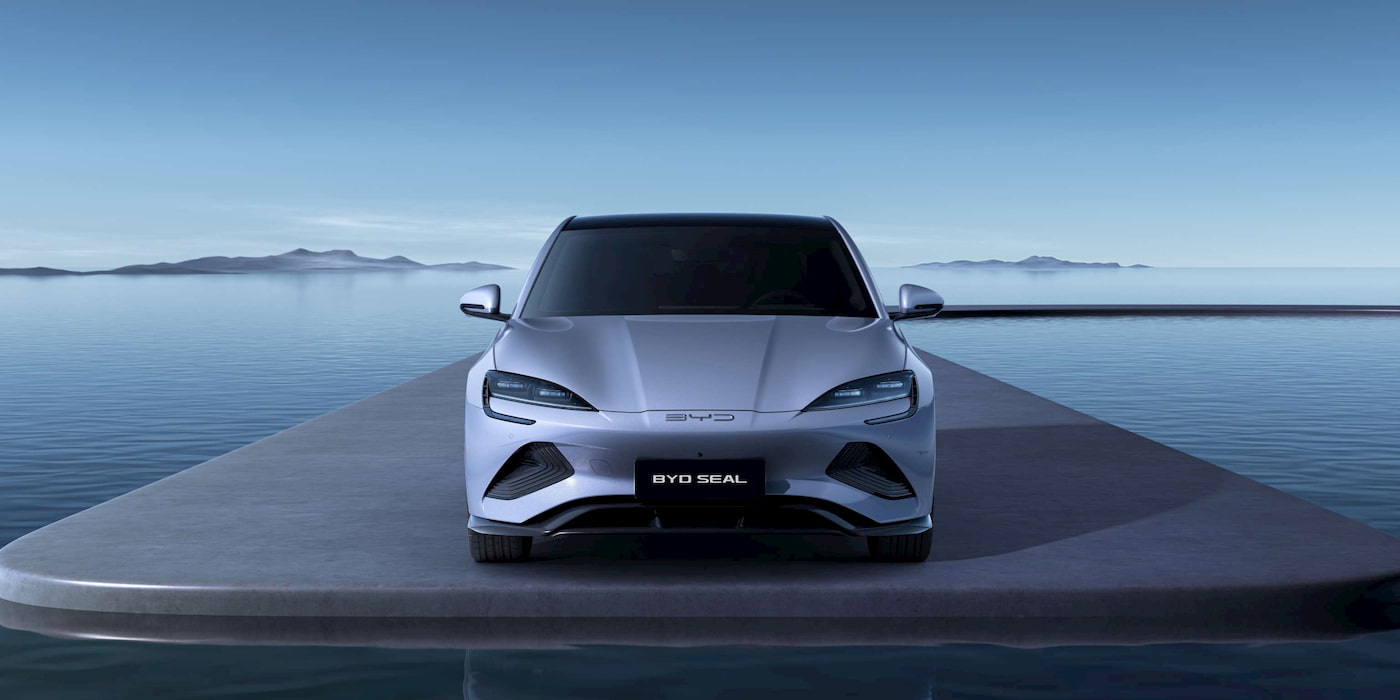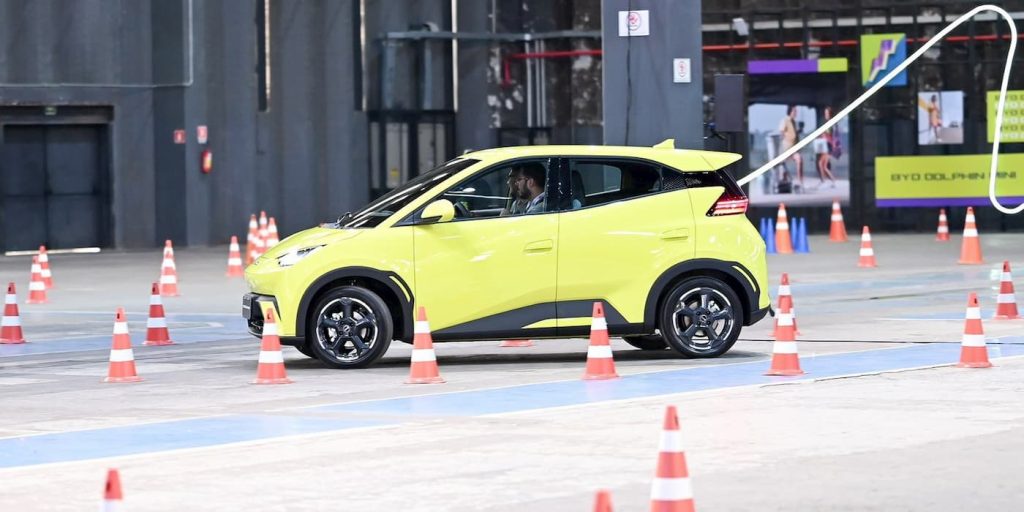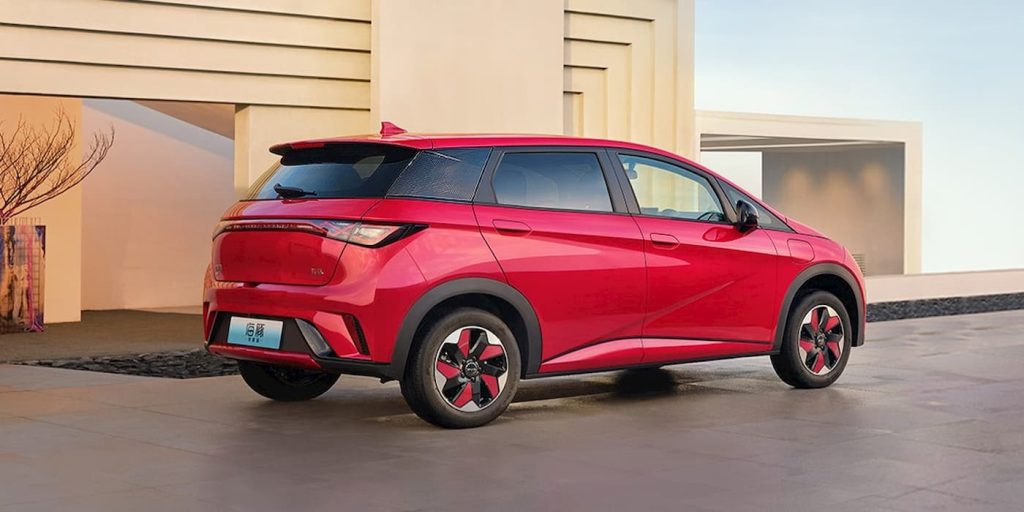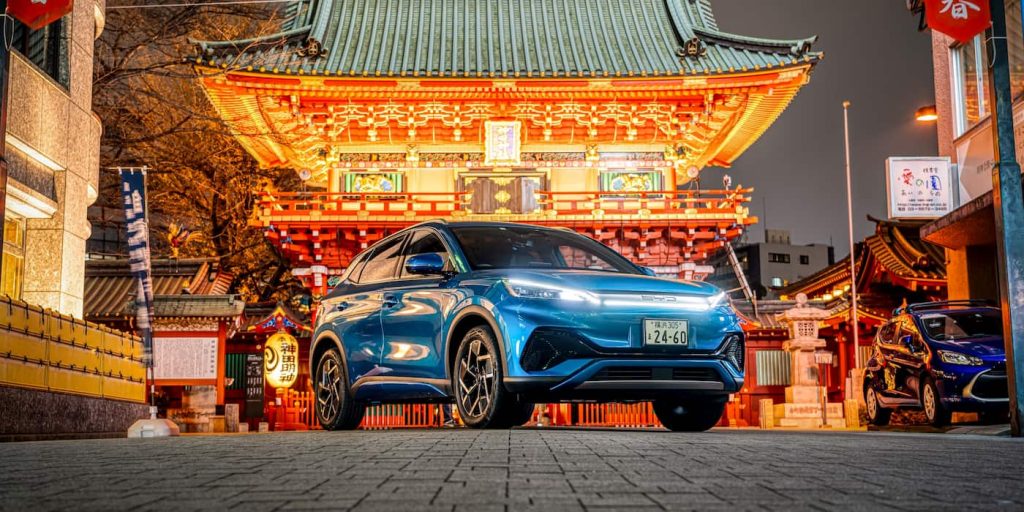
Global EV leader BYD believes new energy vehicles, including EVs and PHEVs, have entered the “knockout round” with gas-powered cars. BYD plans to more than double its overseas sales this year, as it aims for one million in 2025.
Let the “liberation battle” begin
After declaring a “liberation battle” against gas-powered cars earlier this year, BYD, or Build Your Dreams, is putting pressure on overseas rivals.
During an investor meeting on Wednesday, BYD’s CEO, Wang Chaunfu, said it will launch its next-gen hybrid tech offering over 1,200 miles (2,000 km) range. We reported earlier this month that BYD looks to crush gas-powered car sales with its newest platform.
Most BYD vehicles are based on its e-Platform 3.0, an advanced 8-in-1 electric powertrain with integrated Blade batteries.
By building nearly all vehicle components, including batteries, in-house, BYD has a major advantage over rivals. BYD can offer low-cost EVs, like the new Seagull, starting under $10,000 (69,800 yuan) and still make a profit.
Its next-gen DM-i system will enable an even more range at a lower cost. According to a new Yicai report (translated), Chaunfu said BYD will launch its next-gen DM-i platform in May.

BYD believes EVs, PHEVs entered the “knockout round”
Chaunfu added that he believes EVs and PHEVs have “entered the knockout round” and that the next two years will be critical for automakers to scale, reduce costs, and introduce new tech.
As new electric cars roll out in China, BYD sees joint venture brands (overseas automakers) market share falling from 40% to 10%. The 30% offers room for Chinese brands to grow.

BYD is using an “overseas + localization” strategy to expand the brand. For example, BYD is building a plant in Hungary that will “be Europe, for Europe.” BYD’s European leader said the plant will “be closer to customers, offering faster deliveries, and people will trust us more.”
Chaunfu said BYD aims to sell 500,000 vehicles overseas this year, more than double the 240,000 handed over last year. By 2025, BYD sees overseas sales reaching 1 million.

BYD’s first vehicle transport ship, the BYD Explorer No. 1, landed in Germany last month as the automaker expands its overseas footprint.
Meanwhile, after launching in Japan last year, BYD already accounted for 20% of Japan’s EV imports in January, a market dominated by Toyota.
The automaker launched a “liberation battle” with drastic price cuts and new lower-priced models earlier this year.
BYD says its main competition is gas-powered vehicles and joint venture brands. Several of its most popular EVs, including the Dolphin and Seagull, were updated with lower prices. Its cheapest EV, the Seagull, starts at just $9,700.
Electrek’s Take
BYD has already sent shockwaves throughout the industry with the new Seagull EV starting under $10,000.
Ford’s CEO Jim Farley called the Seagull “pretty damn good,” as he warned rivals. Farley said at the Wolfe Research Conference last month that if automakers fail to keep up with the Chinese, like BYD, “20% to 30% of your revenue is at risk.” In response, Ford is shifting from larger to smaller, more affordable EVs.
How will automakers react to a new platform that will cut costs even further? With new tech and models rolling out, BYD expects to steal even more market share from gas vehicles over the next few years.
Although many pit BYD and Tesla against each other because they are the leading EV makers, BYD sees Tesla as a respected industry partner. Its main target is gas-powered vehicles.
BYD is best known for its affordable EVs, such as the Dolphin, Atto 3, and Seagull, but it’s expanding into new segments, including mid-size SUVs and luxury models.
FTC: We use income earning auto affiliate links. More.






